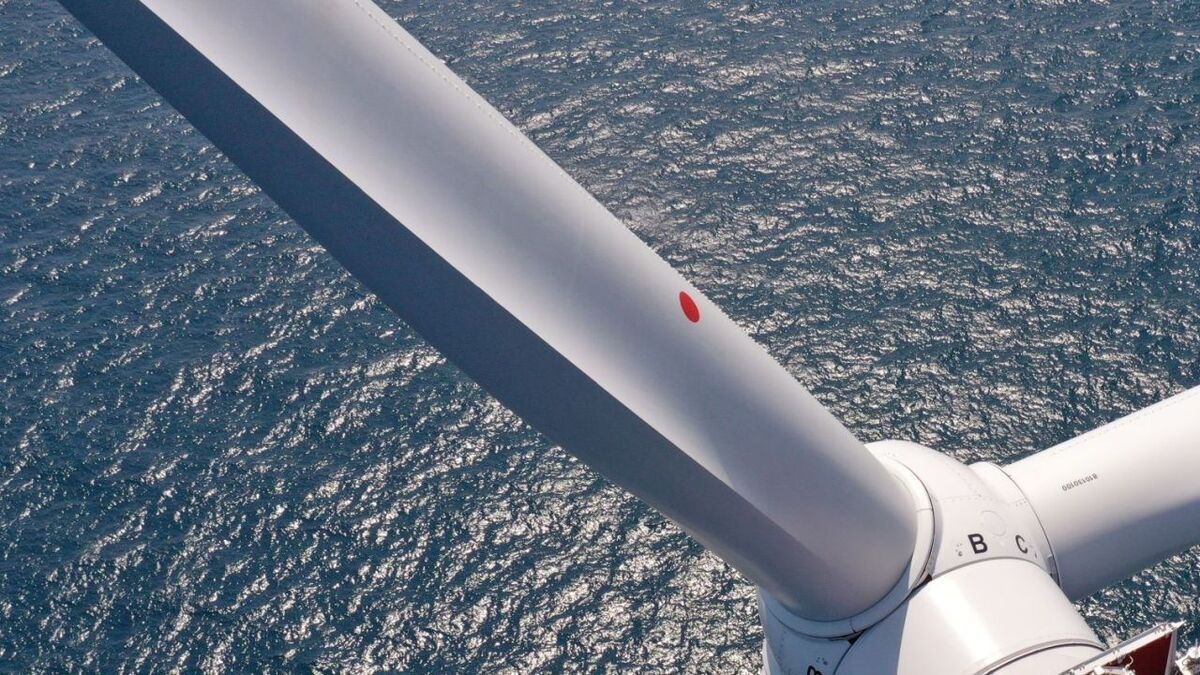The offshore wind industry enjoyed its best-ever year in 2021, with 21.1 GW of new capacity connected to the grid, according to the latest Global Offshore Wind Report launched by the Global Wind Energy Council (GWEC)
GWEC said the report shows the offshore wind industry has entered an era of dramatic growth as governments turn to the technology and establish ambitious new targets in their search for energy security and affordability, and strive to meet new net-zero emissions ambitions. It said the implementation of these upgraded targets should start to deliver yet more record-breaking years from 2025 onwards.
GWEC’s Global Offshore Wind Report 2022 shows governments are getting more and more ambitious about offshore wind. GWEC Market Intelligence revised up its outlook for 2030 by 45.3 GW, or 16.7%, from last year’s report and believes 260 GW of new offshore wind capacity could be added in 2022-2030.
GWEC chief executive Ben Backwell said, “It has been an astonishing year for the offshore wind sector. Governments around the world are recognising the once in a lifetime opportunity that offshore wind represents to deliver secure, affordable and clean energy while fostering industrial development and job creation. Now we need to work to rapidly implement targets and ambitions, while building a healthy and ‘fit for growth’ global supply chain.”
The volume of annual offshore wind installations is expected to more than double from 21.1 GW in 2021 to 54.9 GW in 2031, and offshore wind’s share of new global wind installations is set to grow from 23% in 2021 to at least 30% by 2031.
“Political commitments put offshore wind in a vital position for reaching net zero. The energy crisis and the Russian invasion of Ukraine has seen governments further raise their offshore wind targets as they look to secure their energy supplies,” said GWEC.
The Global Offshore Wind Report 2022 forecasts government targets will take the world to around 370 GW of capacity by 2031, close to the /IRENA Offshore Wind Energy Compact’s target of 380 GW of offshore wind installations by 2030.
GWEC said to go further and reach the 380 GW figure by 2030, “a gargantuan effort” is required to turn these ambitions into actions. Government, industry and other stakeholders must work together to ensure seabed concessions are being licensed at the right pace, to make sure that planning processes are simplified and made more efficient and to ensure procurement schemes such as auctions can deliver sustainable prices which recognise the system and social value of offshore wind energy.
“It is essential governments and the private sector work together to ensure the existence of a well-functioning global supply chain that is able to scale up rapidly over the next decade to meet growth,” said GWEC.
“At present, the health of the supply chain is under threat from inflationary pressure from commodity and logistics price increases, while suffering from “race to the bottom” pricing and uneven demand growth.
“Inaction would risk the opportunity for offshore wind to push the energy transition forward at scale, creating significant national and local jobs, delivering economic growth and lowering energy prices, all while supporting energy security.”
Ørsted head of regulatory affairs Ulrik Stridbæk said, “The global offshore wind industry is at a critical inflection point. On one hand, we see political ambitions increase exponentially. But on the other hand, the industry is facing increasing costs and disrupted supply chains, jeopardising its long-term ability to realise these targets.
“GWEC’s Global Offshore Wind Report is a crucial moment to take stock and convene the industry to discuss how to overcome these challenges and unlock the investments needed for offshore wind to play its part in keeping 1.5°C alive.”
Of the floating wind market, GWEC said, “This was also the year that showed floating offshore wind has now passed the demonstration stage and entered the precommercial phase, with 57 MW of new installations bringing the total installed globally to 121.4 MW. Of those new installations, 48 MW were in the UK, 5.5 MW in China and 3.6 MW in Norway.”
Considering the increased floating wind target in the UK and the accelerated floating project development activities in Europe, Asia and North America – which bring the current global floating project pipeline to 120 GW – GWEC has upgraded its 2030 global floating wind forecast by 14% from last year’s report and predicts that 18.9 GW is likely to be built globally by 2030, of which 11 GW will be in Europe, 5.5 GW in Asia and the rest in North America.
GWEC Market Intelligence has identified more than 700 GW of offshore wind projects that are at different stages of development worldwide, of which 120 GW is floating wind.
Currently, 23 GW capacity of offshore wind projects is under construction. With 49.5% market share, Europe is now taking the lead in offshore wind project construction, followed by Asia (46.4%) and the US (4.1%). China is the most active market with 7.8 GW under construction, followed by the UK (5.6 GW), Netherlands (2.3 GW), Taiwan (2.1 GW), France (1.4 GW), and Germany (1.1 GW).
GWEC saidChina contributed 80% of new offshore installations in 2021, leading offshore wind for the fourth year in a row. The Global Offshore Wind Report 2022 forecasts that by the end of 2022 Asia will replace Europe as the world’s largest offshore market. The report suggests it could take until 2031 for Europe to regain the crown.






